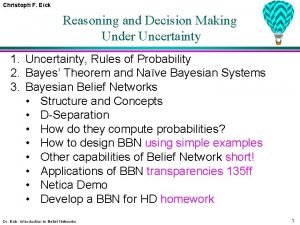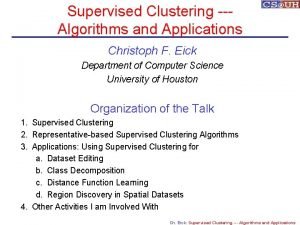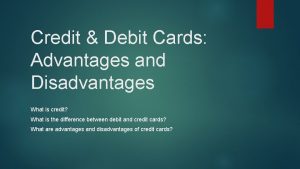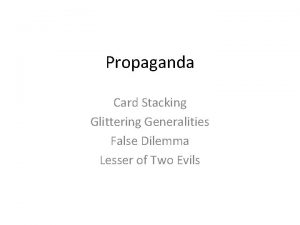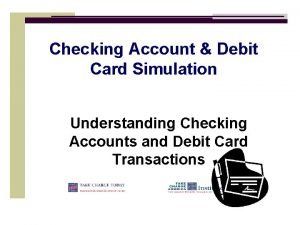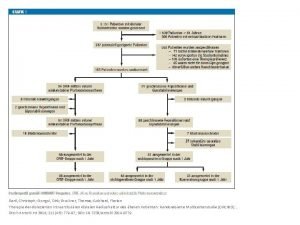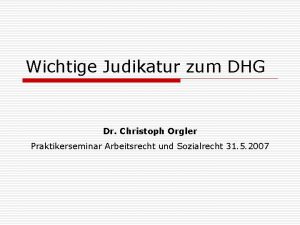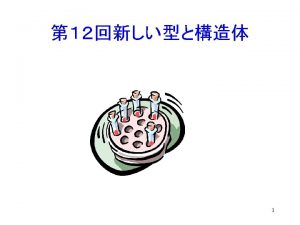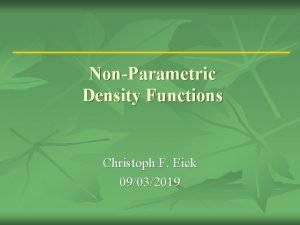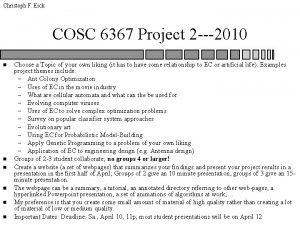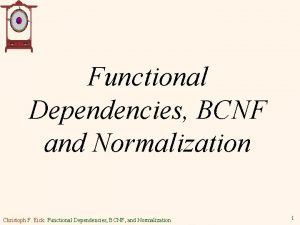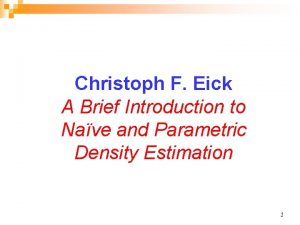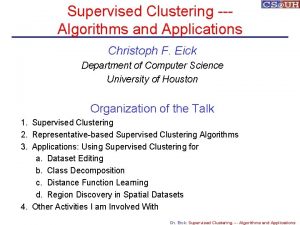Christoph F Eick PLAYER 1 CARD PLAYER 2














- Slides: 14

Christoph F. Eick PLAYER 1 CARD: PLAYER 2 CARD: FLOP: Using Reinforcement Learning to Play UH-Leduc-Poker Intelligently COSC 4368 Spring 2020 Group Project

UH-Leduc-Hold’em Poker Game Rules Leduc Hold’em is a two player poker game. The deck used in UH-Leduc Hold’em contains multiple copies of eight different cards: aces, king, queens, and jacks in hearts and spades, and is shuffled prior to playing a hand. At the beginning of a hand, each player pays a one chip ante to the pot and receives one private card. A round of betting then takes place starting with player one. After the round of betting, a single public card is revealed from the deck, which both players use to construct their hand. This card is called the flop. Another round of betting occurs after the flop, again starting with player one, and then a showdown takes place. At a showdown, if either player has paired their private card with the public card they win all the chips in the pot. In the event neither player pairs, the player with the higher card (SA>HA>SK>HK>SQ>HQ>SJ>HJ) is declared the winner. The players split the money in the pot if they have the same private card. Moreover, players might fold their “bad” hand, avoiding further losses: in this case, the other player wins the money the folding player has bet so far.

The UH Leduc Hold’em Deck This is a “queenly” 18 -card deck from which we draw the players’ cards and the flop from without replacement. The deck contains three copies of the heart and spade Q and 2 copies of each other card (spade and heart A, spade and heart Q, spade and heart J. That is, the deck contains 50% more queens in comparison to aces, kings and jacks. Therefore, your chance to getting a pair after receiving a queen—although the Q is somewhat low in rank—is significantly higher than holding an ace, king or jack. In general, holding a Q has some “potential” but you do not like to bet a lot in phase 1 not knowing the flop! 18 Card UH-Leduc-Hold’em Deck

UH Leduc Hold’em Betting Restrictions ■ Ante is $1, raises are $3. ■ Each player can only check once and raise once; in the case the player cannot check she has either to fold losing her money or raise his bet. ■ Only player 2 called T can raise a raise.

Example Game 1: Player S private card: Player T private card: Phase one Betting: Player S checks, Player T raises to 4 dollars, player S calls; each play has $4 in the pot The flop is revealed: Phase two betting: Player S raises to 7 dollars, player T raises to 10 dollars, player S calls. Payoff: Player S wins 10 dollars and player 2 loses 10 dollars.

Example Game 2: Player S private card: Player T private card: Phase one Betting: Player S raise to 4 dollars and play T calls ; each play has $4 in the pot The flop is revealed: Phase two betting: Player S raises to 7 dollars, and player T folds Payoff: Player S wins 4 dollars and player 2 loses 4 dollars.

Example Game 3: Player S private card: Player T private card: Phase one Betting: Player S checks and player T raises to 4 dollars and player S calls The flop is revealed: Phase two betting: Player S checks and player T checks Payoff: Player T wins 4 dollars and player S loses 4 dollars.

Example Game 4: Player S private card: Player T private card: Phase one Betting: Player S checks, Player T checks The flop is revealed: Phase two betting: Player S folds (she was not allowed to check as she did not bet anything in the last round, and did not feel like raising with such a bad hand) Payoff: Player S loses one dollar and player T wins one dollar

Example Game 5: Player S private card: Player T private card: Phase one Betting: Player S raises to 4 dollars, player T raises to 7 dollars and player S calls. The flop is revealed: Phase two betting: Player S raises to 10 dollars, player T raises to 13 dollars, and player S calls; the pot now contains $26. Payoff: Every player get a payoff of 0$ as they have the same private card.

Example Game 6 (Bluff): Player S private card: Player T private card: Phase one Betting: Player 1 checks, Player 2 checks The flop is revealed: Phase two betting: Player S raises to 4 dollars and play T folds Payoff: Player S wins one dollar and player T loses one dollar.

Houston Leduc Poker Joint Search Space ■ Player 1 is called S and player 2 is called T ■ States are assumed to be tuples (player-phase-id, total bet player 1, total bet player 2, Card the player holds, hole-card or * if unknown) or states are terminal states represented using simple strings such ‘WL 7’; payoff occurs in terminal states. For example, the state (t 1, 4, 1, SK, *) represents the fact that player T has to act, player S bet 4 dollars so far and player T bet 1 dollar so far, player T’s hidden card is the spade K, and the hole card has not been revealed yet (represented by *). States with prefix s are only in the state space of player S, states prefixed by t only belong to the state space of player T; finally, states that are represented by simple strings are terminal states belonging to the search space of both players. ■ Terminal states are either showdown states or fold states: e. g. the state WL 7 indicates that each player has bet $7 and the player with the better hand will win $7 and the other player will lose $7 or there might be no payoff in case that both players hold the same card. On the other hand, a player might win money when the other player folds her hand; as far as fold states are concerned for example PT 4 represent that fact that player T won 4 dollars because player S folded her hand. ■ The actual state space is given in the next 3 slides; more complicated or simpler state spaces could be used in the group project.

Joint State Space First Phase (s 1, 1, 4, C 1, *) fold PT 1 raise check (t 1, 1, 1, C 2, *) call (s 2, 1, 1, C) check (s 1, 1, 1, C 1, *) Initial State PS 1 fold raise call (t 1, 4, 1, C 2, *) (s 2, 4, 4, C 1, C) raise (s 1, 4, 7, C 1, *) call (s 2, 7, 7, C 1, C) fold PT 4 Remarks: • C 1 and C 2 represent S’s and T’s private cards, and C represents the revealed flop, and * represents the fact that the flop card has not been revealed yet. • Note that there will be eight different states for each value of C 1 and for each value of C 2!

Joint State Space Second Phase call WL 10 (s 2, 7, 10, C 1, C) raise call WL 7 fold PS 4 (t 2, 7, 4, C 2, C) raise (s 2, 4, 4, C 1, C) check fold raise (t 2, 4, 4, C 2, C) (s 2, 4, 7, C 1, C) check PT 7 call WL 7 fold PT 4 WL 4 call (s 2, 4, 7, C 1, C) raise (s 2, 1, 1, C) raise (t 2, 4, 1, C 2, C) fold call WL 4 fold PT 1 WL 7 PS 1 PT 4

State Space 2 nd Phase continued WL 13 call (s 2, 10, 13, C 1, C) raise call WL 10 fold PS 7 (t 2, 10, 7, C 2, C) raise (s 2, 7, 7, C 1, C) check fold raise (t 2, 7, 7, C 2, C) check (s 2, 7, 10, C 1, C) WL 7 PT 10 call fold WL 7 PT 4

